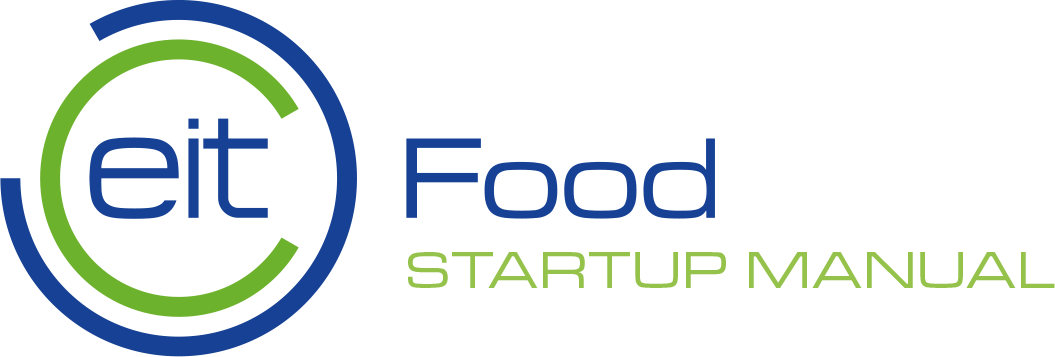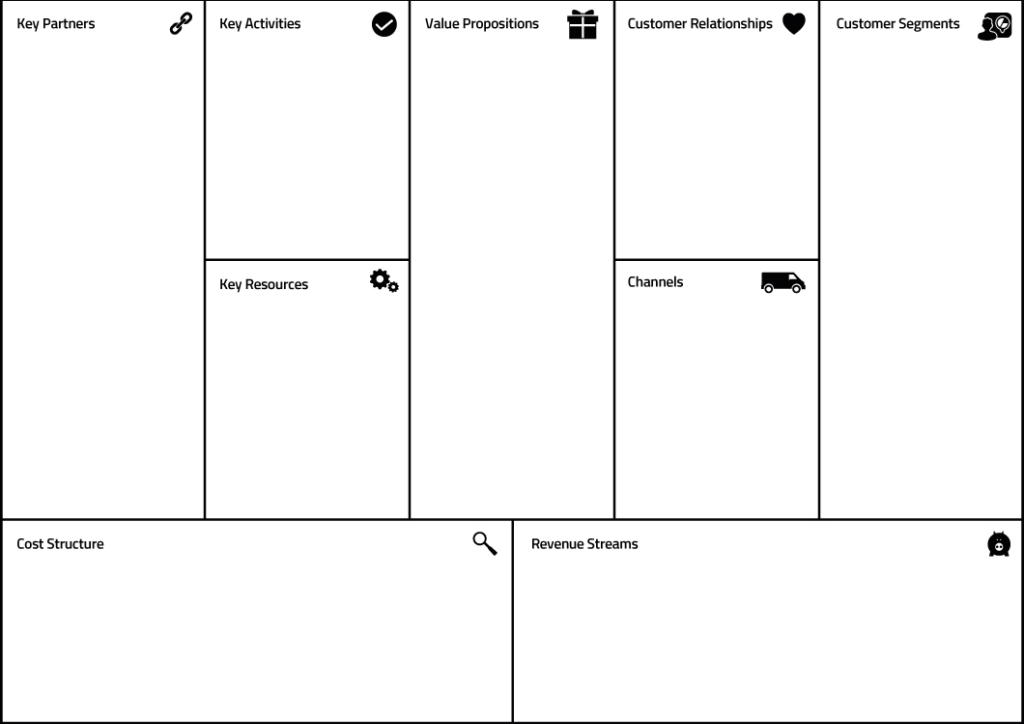Module 3 - Developing a business model & building your business plan
1. From idea to business model
Once you’ve decided to take the plunge, you need to figure out how to make money from it. In other words, you need to figure out what your business model is. There are lots of questions that fall under this: who is your target customer? What problem are you trying to solve? What’s your cost structure? What’s your profit margin? When your business model is figured out, it’s time to write up a business plan! This next chapter focuses on guiding you through both of these stages.

“Profit for a company is like oxygen for a person. If you don’t have it, you’re out of the game. But if you think your life is about breathing, you’re really missing something.”
– Peter Drucker
A useful tool for startups is the business model canvas developed by Alexander Osterwalder. It’s a simple visual template divided into 9 sections that cover all elements of a business model. It’s a great starting point when sketching the ins and out of your business. It helps you focus, have clarity on key parts of your business and is easily adaptable as your business model inevitably evolves.
The best way to get started on the business model canvas is to print a physical copy of the template below and next page, sit down with your co-founders (or an advisor/someone who can help if you’re a solo founder) and brainstorming each section. The different sections can be broadly categorised under four parts of a business.
Click to Download PDF
Entrepreneur top tip on business models for mission driven businesses: Link your mission to your business model!

“You’ve got to get a real balance… it’s a cliché but: work hard, play hard. I very much live my life like that. I work really hard during the weekdays, if you need to get up early, get up early, if you need put in the hours, do. But on the weekend, really switch off, see your friends, don’t check your emails. Go on holiday. It’s quite hard because you’re short on time and money when you’re in a startup but you need to find a way. Make sure you get that balance.”
-Lucy Wright, Co-Founder at Nice
Key partners: who are your key partners? In other words, who helps you? Think of suppliers, manufacturers, and other stakeholders. What do you get from these partners and what activities do they perform? Partners help optimise operations and reduce risk or uncertainty.
Example: a coffee company with a subscription service that has outsourced its production, may list its coffee bean suppliers, its packaging providers, its co-manufacturer, and its transport companies as key partners. If it applies certain standards like Fairtrade or the Rainforest Alliance principles, it may also list those NGOs under this section.
Key activities: what key activities does your value proposition require? In other words, what do you do as a business? What activities are important for your distribution, customer relationships, and revenue?
Example: the same coffee company’s key activities would be the sourcing, selling and marketing of coffee.
Customer relationships: how do you interact with your customers? What kind of relationship do you have with them?
Example: for the same coffee company, the majority of its customer relationships would be digital in the form of direct contact via email and social media interaction. A coffee company selling its products through traditional retailers would also interact with its customers online but it would also have physical relationships such as sampling events in stores or presence at consumer-facing shows (e.g.: festival, coffee fairs etc).
Channels: what are your main distribution channels? How do your customers know about you and how do you deliver your product or service to them? Which channels work the best?
Example: in the case of the subscription service coffee company, the main distribution channel would be direct sales through the company’s website. Its customers would know about it through various activities such a digital marketing, social media, PR, direct email marketing, SEO and potentially offline activities such as flyering and a presence at consumer shows & events.
Cost structures: what are your costs? Is your business cost or value driven (in other words, do you compete on price like a discount supermarket or do you place more importance on value like a high-end brand of teas?) Which of your activities and resources are the most expensive?
Example: a company’s costs can be divided as fixed and variable costs. Fixed costs remain the same regardless of the amount of goods and services sold (for example: rent and salaries). Variable costs increase or decrease depending on the level of output. If you sell more of your product or service, the costs needed to produce and deliver those would increase.
Key resource: what key resources does your value proposition require? In other words, who are you? And what do you need to help drive the business? What resources are important for your distribution, customer relationships and revenue? These could be financial, physical, intellectual, human.
Example: the online subscription coffee company outsourcing its production and logistics would have human resources as its main resource as the key activities would focus on sourcing, selling & marketing. Much of the value created would thus rely on its brand (a key resource). Financial resources in the form of investment or debt may be required depending on how the company wanted to grow. If a coffee company were to run its own production and directly own coffee plantations, it would also list the latter and a factory under its key resources.
Value Proposition: what value do you deliver to your customer(s)? What problem(s) do you address for them? What customer needs are you meeting? In other words, how do you help your customer?
Example: an online coffee subscription service would aim to meet different customer needs: the need and desire for great coffee and need for convenience (not having to purchase coffee outside of the home, not having to worry about forgetting to buy it and running out…).
Customer Segments: who are your customers? In other words, who are you trying to help? Who are you creating value for? And who are your most important customers?
Example: as a direct to consumer subscription service, the coffee company would only have one direct customer segment, individuals buying coffee on their website and getting it delivered to their home. A coffee company selling via traditional retail would have several tiers of customer segments: distributors, retailers and consumers themselves.
Revenue Streams: what do you get from your different customer segment? What value are customers willing to pay?
Example: a subscription service would get revenue from the sale of its coffee. One advantage of such a business model is a regular revenue stream as customers sign up to a weekly/monthly order. A retail focused coffee company would get its revenue from the sale of coffee to its different customer segments: distributors, retails, and potentially direct to consumer, each having a different pricing structure.



